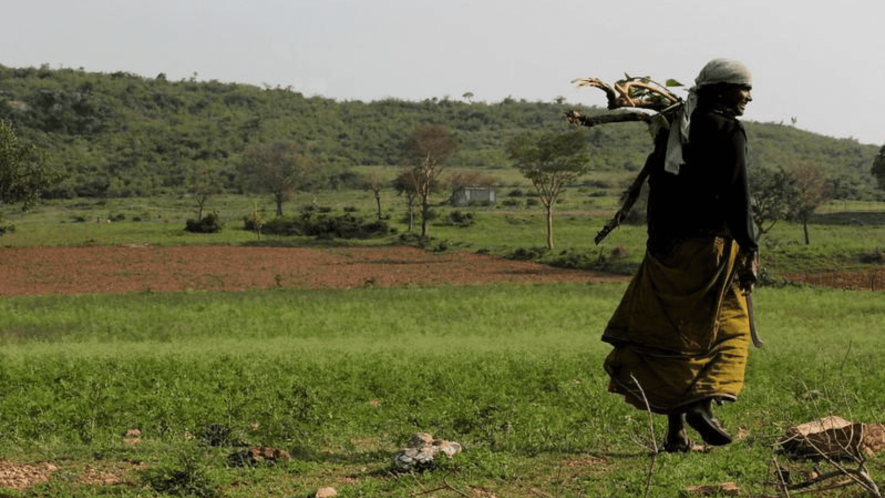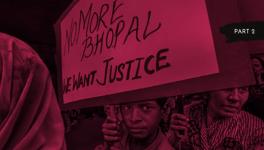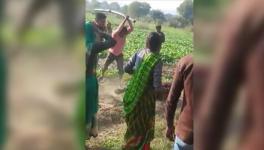Only 2 Adivasis to be Compensated for Diverting 785.49 Hectares of Forestland

Representational Image. File Image
New Delhi: A massive tract of forestland equivalent to nearly 1,500 football fields has been proposed for clearance for a coal mining project in the Singrauli district of Madhya Pradesh (MP). Shockingly, though half the population that will be affected by the project are Adivasis (Scheduled Tribes), clearing the forest will affect the livelihood of only two persons, as per state government data.
An expert review panel of the Narendra Modi government has recommended environmental clearance for the Rs 2,300-crore project based on a commitment that the two affected individuals will be compensated.
The 785.49 hectares of forestland is part of 1850.94 hectares of lease area spread across five villages in the district’s Sarai tehsil over which businessman Aditya Birla’s conglomerate Essar Group has proposed a 5 million tonnes per annum (MTPA) opencast mining project to extract coal from the Bandha block.
On the other hand, local communities claim that the majority of the 3,551 project-affected persons, including 1,569 STs (42%), depend on the forests' natural resources for their livelihood.
“We do not have any government record to establish that we have been dependent on the resources of these forests for generations. Besides Adivasis, other communities too depend on these forests for livelihood,” Neeraj Pandey, a resident of Bandha, one of the five affected villages, told this reporter.
More than 18 years after the enactment of the landmark Forest Rights Act, 2006—which provides community and individual rights over forestland to STs and other traditional forest dwellers—the Shivraj Singh Chouhan government has provided pattas (revenue records of land ownership) to only two individuals across the five villages.
The MP government has not responded to a question about the number of pending applications seeking individual and community rights over the forestland.
Apart from Bandha, the other villages that will be affected by the project are Tenduha, Pidarwah, Deori and Pachaur.
Due to back-to-back industrial projects, forestland in coal-rich Sarai tehsil has rapidly decreased in a few years.
Approximately, 260 hectares were cleared for the Suliyari coal mining project of the Andhra Pradesh Mineral Development Corporation. Preparations are under way to clear another 1,397.54 hectares of forests for developing the massive Dhirauli coal mining project.
The livelihood of local communities has been hit hard with the depletion of forestland even as mining projects have not generated adequate employment.
The Essar Group has claimed that the Bandha project, which is apparently beneficial for the “energy security of the country”, will generate 1,406 direct jobs and more than 5,000 people will be benefited indirectly.
However, locals are confused about the generation of employment from the project. For instance, though Pandey’s joint family will lose more than 22 hectares of agricultural land and an ancestral house, there is no clarity on how many members will be employed.
“Forest resources like mahua, tendu, sal and chiraunji have always been abundantly available to local communities. We sell the minor forest produce, which fetches us a decent income. We will lose the forests with no commitment to jobs. The standard response of officials is that a third-party contractor will decide jobs,” Pandey said.
A rehabilitation and resettlement (R&R) package for project-displaced people is being prepared. To develop an R&R colony, 100.93 hectares have been identified. The R&R policy for the project was published in March.
The Expert Appraisal Committee (EAC) of the Union Ministry of Environment, Forest and Climate Change (MoEFCC) cleared the project in July on the commitment that the two individuals, who have ownership over just 3.463 hectares of forestland, will be compensated at the rate of Rs 12 lakh and Rs 18 lakh per hectare, respectively, against non-irrigated and irrigated land.
The project proponent (PP), Essar Group subsidiary EMIL Mines and Mineral Resources Limited, has further promised that the two individuals will be provided residential plots measuring 5,400 square feet, benefits under the R&R package and additional benefits extended to the project-affected tribal population.
The CEA cleared the project with a simple direction, among a set of terms and conditions laid down upon the PP, that the rights of tribal communities need to be preserved.
“The PP needs to protect the tribal population as per the Forest Right Act, 2006, and under the supervision of district collector, Singrauli,” the EAC said.
Apparently, many applications from the five project-affected villages demanding community and individual rights over the forestland are pending at various levels.
A set of questions was sent by this reporter to Sanjay Khedkar, an assistant commissioner in Singrauli’s tribal welfare department, to enumerate village-wise pending applications.
“The number of pending applications cannot be enumerated because these are filed through a portal-cum-app developed by the state government to implement the provisions of the Act,” Khedkar replied.
Notably, the portal-cum-app, Van Mitra, has been the subject of a major controversy. The Act envisages only a clear three-tier structure with Gram Sabhas as the lowest rung for processing applications for forest rights. On the other hand, applications filed through any channel other than through the portal-cum-app are allegedly rejected.
A public interest litigation over the matter has been pending in the Madhya Pradesh High Court for the past two years.
Besides, the state government has a poor track record in implementing the Forest Rights Act. More than 51% of the applications (3,22,699) filed for forest rights have been rejected. In comparison, the national average for rejected forest rights applications is below 40%.
Notably, the EAC’s nod for the project has come even as the Madhya Pradesh government is yet to give the first stage clearance for the diversion of the forestland. The forest department has punched several holes into the information provided to it by the project proponent while seeking permission for forestland diversion.
In a letter dated June 9, the forest department pointed out several shortcomings in the Essar Group’s application. As per the department, the total area of forestland within the mining lease area was found to be 807.917 hectares through satellite imagery instead of 785.49 hectares
Agricultural land and plantation works carried out recently have been found within forest patches identified for diversion. Satellite imagery also revealed a metalled road, settlements, seasonal nallas and ponds within the forestland proposed for diversion. Plantation using government funds has been done in many reserved forest compartments identified for diversion.
Again, the parcel of land identified by the PP for compensatory afforestation is approximately 37.24 hectares less than the actual land required. Satellite imageries have revealed roads, settlements and water bodies over land identified for afforestation.
A detailed questionnaire was emailed to EMIL Mines and Mineral Resources Limited asking for responses to the aforementioned shortcomings pointed out by the forest department. This article will be updated if responses are received.
Furthermore, the hydrological balance of the region is set to be affected by the project. The Bandha block contains geological reserves of more than 560 million tonnes of coal, out of which 90 million tonnes are under the watershed area of an important stream called Kachanmuda Nalla.
Another important river tributary, Bandha Nalla, flows through the mining lease area. The PP has proposed to channelise rainwater, which feeds Kanchanmuda Nalla, through “catch drains and sedimentation ponds”.
The writer is a freelance journalist.
Get the latest reports & analysis with people's perspective on Protests, movements & deep analytical videos, discussions of the current affairs in your Telegram app. Subscribe to NewsClick's Telegram channel & get Real-Time updates on stories, as they get published on our website.
























